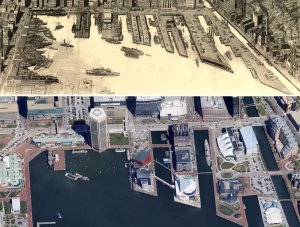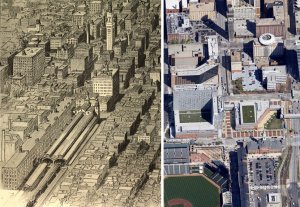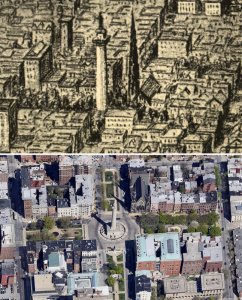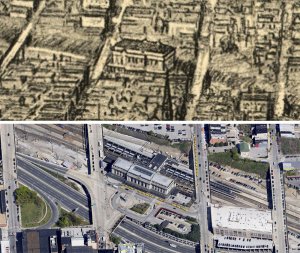Constant Through the Years
Baltimore has been around for some time– even longer than the country itself. Once a hunting ground for local American Indians and now the largest city in the state of Maryland, the city boasts 66 National Register Historic Districts and 33 local historic districts– from the formidable setting of Fort McHenry to the poignant Holocaust Memorial in Corner of Water, truly, a modern city dotted with preserved sites and places of the past.
Baltimore and the surrounding area sure has changed a lot in its centuries-long history. But many traditions and landmarks from decades ago are still around today, give or take a few variations — The Baltimore Sun
Named after the proprietary governor of Maryland, Baltimore and its port exist closer to major Midwestern markets than any other city and port on the East Coast. First settled by the British, Baltimore was once the second-largest port of entry for immigrants.
The port, which is now named Helen Delich Bentley Port of Baltimore, is one of the best naturally protected harbors in the world, with the Delmarva
:max_bytes(150000):strip_icc():format(webp)/FortMcHenry_aerial3-56a4874a3df78cf77282da5c.jpg)
Peninsula that shields the area from most hurricanes and tropical storms, and the Appalachian Range that protects the city from much of the winter cold that would otherwise freeze the harbor.
The present city was incorporated on July 30, 1729, and was named after Lord Baltimore, along with several other ports on the upper edge of Chesapeake Bay. Prior to colonists, many Native American tribes inhabited the land, but withdrew before it was settled by Europeans.
The most famous period in Baltimore’s history was during the War of 1812 when the city was condemned by the British as a “nest of pirates.”
Staunchly anti-British sentiment pervad ed the streets of Baltimore just days after the War of 1812 ignited, making it a worthy target for the enemy. The Battle of Baltimore was decisively won by the colonists on September 13, 1814, when they repulsed a land and naval attack by the British at Fort McHenry following the redcoat torching of Washington, D.C. An angry mob destroyed the building where a Federalist newspaper criticized the colonies for going to war. Read full story.
Old and New
Mark Byrnes through the website CityLab, described how the city endured suburbanization and economic decline while ambitiously rebuilding its core.
Though the city aggressively pursued urban renewal initiatives in the mid- to late 20th century, it has managed to preserve a surprising amount of its infrastructure over time, making for a unique balance of architectural styles.
A hand-drawn map from 1911 designed by Edward Spofford with the same area today, shows just how quickly the city rebuilt after the Great Baltimore Fire of 1904, which destroyed 1,500 buildings over 140 acres of downtown land.

The heart of Baltimore’s economy, its inner harbor, is still intact. But it’s been completely transformed from a congested, polluted shipping hub into a sterile but busy tourist district with national chain restaurants and stores.

A short walk west leads us to what is now Oriole Park at Camden Yards. The Orioles decided to keep the old warehouse we see on the left, now serving as one of the most iconic stadium backdrops in baseball. But original plans for the stadium included demolishing the long, brick structure.

Also remaining is the Bromo-Seltzer tower (the top, middle tower in both images). It debuted in 1911, just in time for Spofford’s drawing, and remained the city’s tallest until 1927.
Just north of downtown is the Washington Monument (older, shorter, and less famous than the one in Washington, D.C.). As you can tell from the aerial image, the neighborhood has retained a lot of what was already built there a century ago, giving it a well-earned historic charm. A little further up is Baltimore’s Penn Station. To the north, much of its building stock remains the same. Full story here.

Over the years, Baltimore’s landscape has evolved. Now, its skyline is full of high-rises , streets bustling with cars, side walks with people and shops. Its population is growing and along are the opportunities. Recently promoted or just wanting to go with the evolution? Dependable Homebuyers could help you sell your current house and be part of the ever-going evolution of the city of Baltimore!
